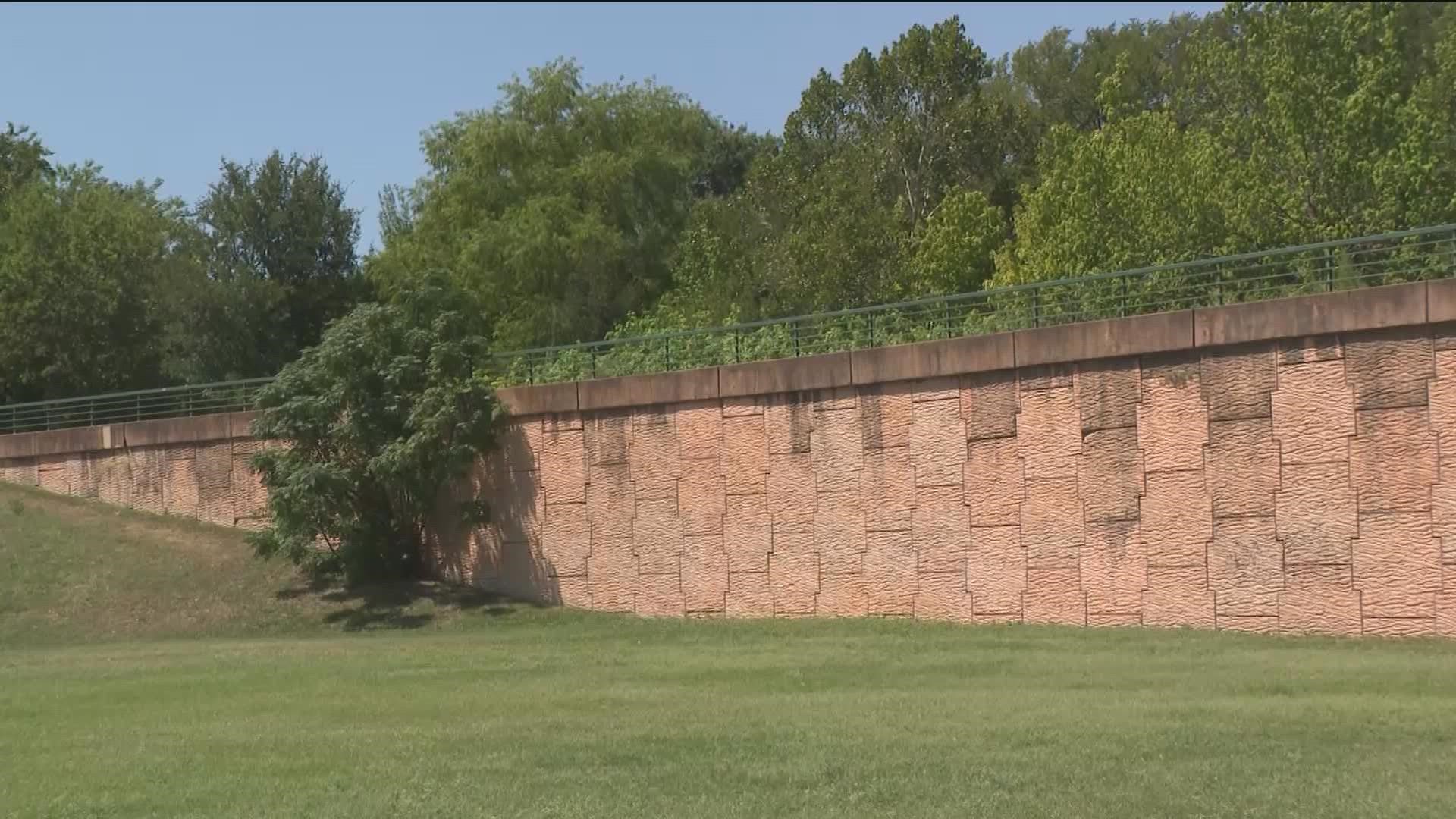AUSTIN, Texas — With all the growth in Central Texas, one of our challenges is aging infrastructure, which includes dams. The KVUE Defenders found that there are 18 State-regulated dams in Central Texas which the State considers to be in "poor condition” with safety and structural concerns.
The Texas Commission on Environmental Quality (TCEQ) said the definition of a poor dam is:
“Major maintenance, structural and/or hydraulic deficiencies were observed at the time of the inspection that could threaten the integrity of the dam, or the dam could not be inspected due to the deficiencies. The owner needs to take immediate action to address all of the items.”
The following map shows all 18 poor-condition dams in Central Texas. If you hover or the dam, you can see the name of the dam and the owners.
Eight of the poor dams in our area are owned by the City of Austin. We spoke with their Watershed Protection Department, which oversees the dams, to learn what the issues are and how they are addressing them.
“There's 33 that are large enough that they are considered dams by the State of Texas,” said Matt Boger, the Watershed Protection dam safety manager, of the dams the City of Austin oversees. “So, those 33 get a little bit extra oversight and have extra regulations on them.”
Of those 33 City of Austin dams, eight are deemed to be in poor condition. This is the worst classification given by TCEQ.
The City says it does constant maintenance on the dams but that some take bigger projects to fix. They have three major projects underway now, two of them are at Old Lampasas Dam and Northwest Park Dam.
Northwest Park Dam was built in 1986 and now it does not meet safety standards for the City or the State. The dam separates Shoal Creek from the district park, which also includes a regional detention facility” where water can flow into when rain comes and the creek rises. The project is set to add overtopping protection to the top of the embankment, repair erosion on the creek side, remove wood vegetation and seal cracks on retainment walls. This project will start construction in 2024.
Old Lampasas Dam on Bull Creek was built back in 1980. The City of Austin's website shows there are numerous holes in the dam and the slopes are eroding. There are 30 structures and two roads downstream that the dam is meant to protect from flooding. This project includes replacing a damaged primary outlet, improving the dam spillway, and modifying the shape and elevation of the embankment. This project will start construction next year. Aging and outdated infrastructure is a big reason changes need to be made.
“Some of the regulations have changed, where what used to be adequate in the late '90s is no longer considered adequate,” said Boger.
“Over time, I think it's just inevitable that things are going to, you know, there's going to be cracking, there's going to be maybe some erosion, there's going to be things that are deteriorating over time that we just need to get in there and take care of,” said Danielle Guevara, a Watershed Department supervising engineer.
Besides aging, some other causes of damage can be weather and vegetation.
“Once it becomes just overgrown, that can cause damage to the concrete,” said Guevara of vegetation. “And it also makes it hard for us to inspect.”
Many of the City's dams are in areas where there is usually no water, but they are in place for large rain events when flooding can take place.
“So, they're not the constant-level dams that you may have think of when you think dam in your mind,” explained Boger.
TCEQ said if the owner fails to address a dam in poor condition, they can refer the owner to the Texas attorney general. They have not had to refer any of the 18 poor Central Texas dams to the Attorney General’s Office.
The City said the goal is to have no poor dams, but with aging and constant maintenance, that is not always possible. But, with three major projects underway and more being planned, they say improvements are coming.
“I think we have roughly $27 million earmarked for dam safety projects in just the next five-year cycle, with more to come,” said Boger. “So, we are working hard on it and I feel confident about it.”
TCEQ said homeowners should be aware of any dam upstream of their property, regardless of condition. They say a damn in any condition has the chance of failing.
Dams are also classified in different hazard levels. A high-hazard dam means seven or more lives could be put at risk or it could cause significant economic damages.
But the information that says where hazard-level dams are is not public. TCEQ said the Attorney General's Office ruled it can't be released. A reason some information on dams is not public is for security reasons. But we do know the state regulates more than 1,800 high-hazard dams and more than 13% of them are in poor condition.
PEOPLE ARE ALSO READING:

